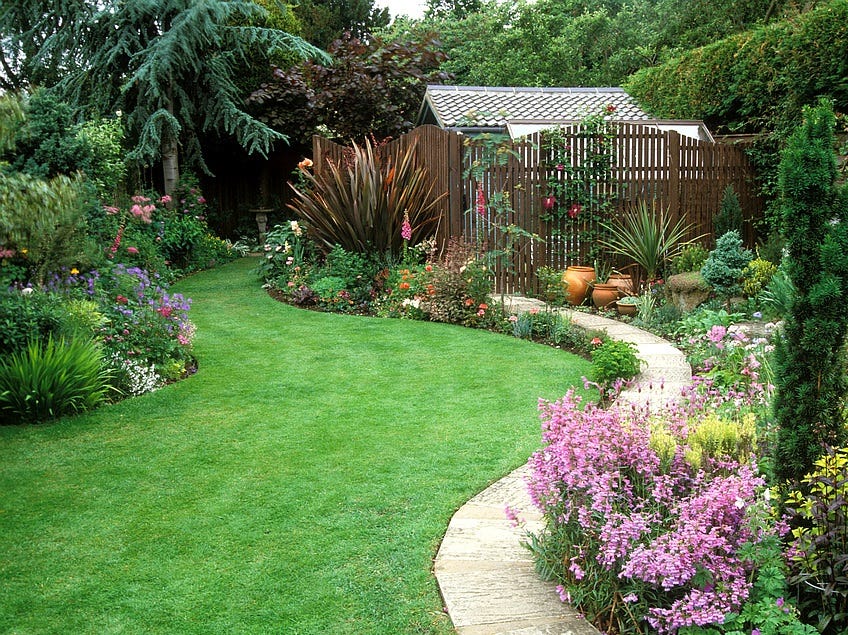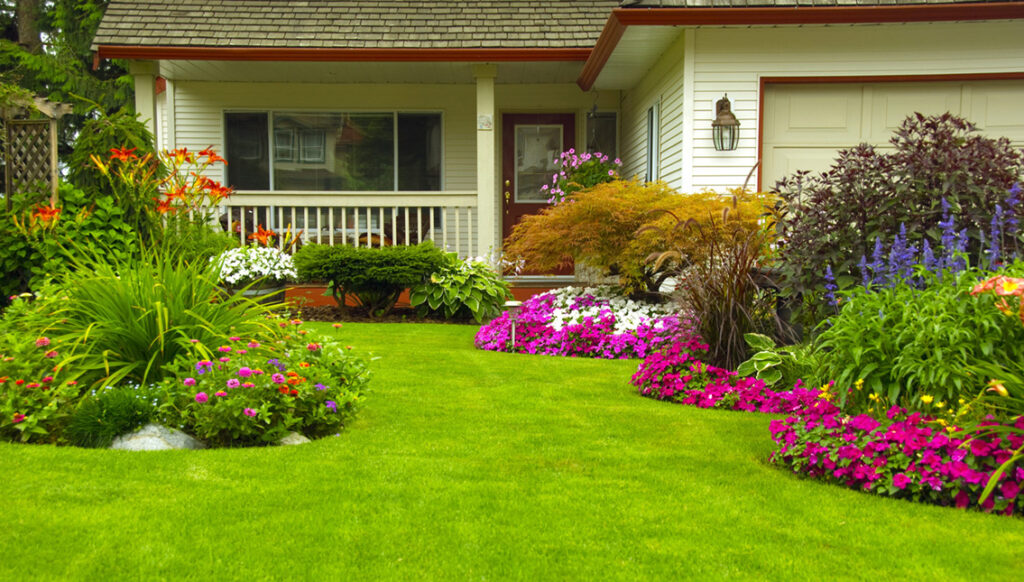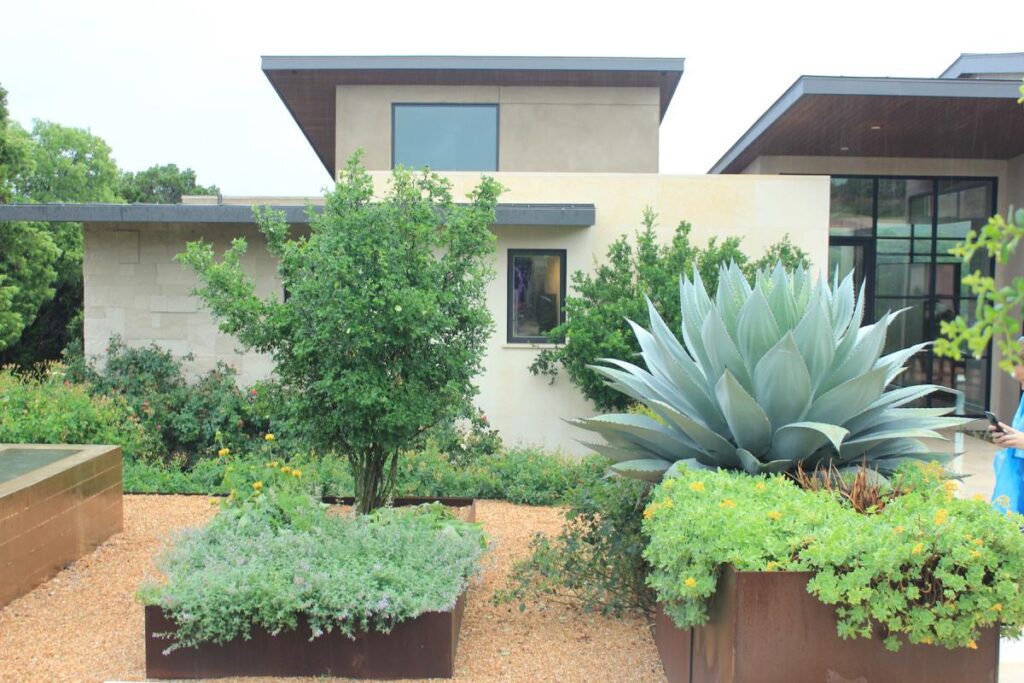Austin’s hot summers and occasional droughts make it an ideal place for incorporating xeriscaping into your landscaping plans. Pairing xeriscaping with hardscaping not only helps conserve water but also creates an aesthetic, low-maintenance landscape. In this blog, we’ll explore how to combine hardscaping and xeriscaping in Austin, providing tips on design elements, materials, and plant selection that complement each other.


What is Xeriscaping?
Xeriscaping is a water-conserving landscaping technique that reduces the need for irrigation by using drought-tolerant plants and efficient water management methods. It involves selecting plants native to Austin or those that thrive in arid conditions. Xeriscaping not only saves water but also reduces maintenance costs and supports local ecosystems.
What is Hardscaping?
Hardscaping refers to the non-plant elements in a landscape design, such as patios, walkways, retaining walls, fences, and other durable materials. Hardscaping creates structure and functionality in a garden or yard while enhancing the visual appeal of the landscape.
Why Combine Hardscaping and Xeriscaping?
When combined, hardscaping and xeriscaping create a balanced landscape that is both visually appealing and water-efficient. Here are the main benefits of integrating these two techniques:
Water Conservation: Austin’s hot climate makes water conservation a priority. Xeriscaping uses drought-tolerant plants that need little to no irrigation, while hardscaping elements like gravel pathways or patios reduce the area that needs watering.
Aesthetic Appeal: Combining these two techniques allows you to design a visually pleasing landscape that integrates natural elements with functional features. Hardscaping can provide structure, while xeriscaping adds color and texture with drought-resistant plants.
Low Maintenance: Both hardscaping and xeriscaping are low-maintenance. Hardscaping elements such as stone or brick are durable and require little upkeep, while xeriscaping uses plants that thrive with minimal attention.
Environmentally Friendly: Together, they support sustainability by reducing water usage and promoting biodiversity. Native plants in xeriscaping help attract local wildlife, while hardscaping materials often come from sustainable sources.
Austin is known for its rocky terrain, and there are many locally sourced materials that blend well with the natural landscape. Some ideal hardscaping materials include:
Flagstone: This flat, irregularly shaped stone is perfect for creating natural-looking walkways or patios. It pairs beautifully with the irregularity of xeriscaping plants.
Decomposed Granite: A compacted material that works great for pathways, driveways, or patios. It’s natural, porous, and blends seamlessly with xeriscaping.
River Rock: Smooth stones, commonly found in riverbeds, make an excellent choice for dry creek beds, water features, or decorative mulch.
Using locally sourced materials ensures that the hardscaping elements integrate well with the native environment and support sustainability efforts.
In Austin, hardscaping elements can be designed to add functionality while enhancing the overall xeriscape design. Consider the following options:
Patios and Seating Areas: Create a functional outdoor living space using durable, water-resistant materials like stone or concrete. Patios surrounded by drought-tolerant plants and low-maintenance grass create a comfortable yet sustainable oasis.
Walkways and Pathways: Design winding paths made from decomposed granite, flagstone, or gravel. These materials allow water to drain through, preventing water runoff and minimizing the need for irrigation.
Retaining Walls: If your landscape is sloped, using stone or brick retaining walls can help with erosion control. These walls can also be used to create tiered garden beds that showcase xeriscape plants.
Austin’s climate supports a wide range of drought-tolerant plants that pair perfectly with hardscaping elements. Native and adaptive plants help conserve water and require minimal maintenance. Here are some popular xeriscaping plants for Austin:
Texas Sage (Leucophyllum frutescens): Known for its purple blooms and drought tolerance, Texas Sage is a perfect addition to a xeriscape garden.
Red Yucca (Hesperaloe parviflora): With its long, arching leaves and striking red flowers, the Red Yucca adds both beauty and resilience to your landscape.
Agave: Agave plants are ideal for arid climates and work well in xeriscaping designs. Their sculptural form complements hardscaping elements like stone walls or gravel pathways.
Blackfoot Daisy (Melampodium leucanthum): A native Texas plant that thrives in dry conditions and produces white, daisy-like flowers throughout the summer.
Be sure to group plants based on their water needs. Planting drought-resistant species together reduces water consumption and makes maintenance easier.
Adding mulch or ground cover to your xeriscape can help retain moisture, reduce weeds, and regulate soil temperature. Organic mulches like shredded bark or wood chips work well, while inorganic options like gravel or decomposed granite provide an aesthetically pleasing contrast to green spaces.
Even though xeriscaping relies on minimal irrigation, you can further enhance water conservation by incorporating water-saving features such as:
Rainwater Harvesting: Collect rainwater from your roof and use it to water your xeriscape garden.
Drip Irrigation: This method delivers water directly to the roots of plants, minimizing water waste.
Dry Creek Beds: Create dry creek beds or rain gardens to manage water runoff and prevent erosion.
Conclusion
Combining hardscaping and xeriscaping in Austin is an effective way to create a sustainable, low-maintenance landscape that thrives in the local climate. By choosing the right hardscaping materials, incorporating drought-resistant plants, and utilizing water-saving features, you can build an outdoor space that is both beautiful and environmentally friendly. The fusion of hardscaping and xeriscaping not only conserves water but also enhances the aesthetic appeal of your home, making it a win-win for both you and the environment.



